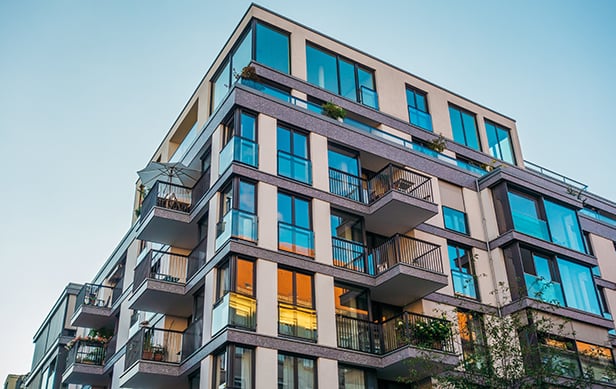GlobeSt.com: Can you provide a little background on the government work vis a vis your private-sector activities?
Lee: As an entrepreneurial design/build firm, we're uniquely positioned to satisfy the government's requirements in a way that conforms better to their new design/build criteria. These criteria represent a transition for the GSA, which is looking more to design /build as a better method of securing government facilities than their traditional methods.
GlobeSt.com: Opus has something on the order of 1.6 million sf in the government pipeline. How much growth do you see?
Lee: It's increasing dramatically. We are currently on the shortlist for nine federal-agency requirements in pursuit. That pursuit cost is significant, but the projects are really good real estate. They range in size from a 160,000-sf office building to a 600,000-foot office. In fact, there's a requirement for more than a million feet of warehouse and data center in Winchester, VA. The federal program could be 25% of our business nationally and I expect it to stabilize at that number. Also there's a philosophy within GSA that I can't argue with. They don't want you to be a sole-source provider for all their work within any one region. They want alternatives available.
GlobeSt.com: Could the changing political climate slow the expected growth?
Lee: Don't confuse need with funding. There's clearly a need. The funding will wax and wane, but we anticipate that the commitment to provide good, safe office space to the federal worker will continue. We can't continue to operate some of these functionally obsolete buildings.
GlobeSt.com: Building safety has certainly ratcheted up. Can you speak to that?
Lee: The GSA is going through changes in office criteria that relate in large part to new anti-terrorism protection regulations. There are new guidelines concerning occupancy and design standards. Since Oklahoma City they simply have to have setbacks that are different than before, and you can't drive a car next to the building or put a truck in the loading dock without some level of security. In addition, you get into glass-proofing and progressive collapse on the structure. The new regulations are all about keeping employees safe. In fact, they're writing the book on what kind of film you need on the windows to keep glass from becoming shrapnel. It's an unfortunate reality we all have to live with.
GlobeSt.com: Progressive collapse?
Lee: If there's an event that takes out a column, it doesn't bring the entire building down. Oklahoma City is an example of where progressive design was not designed into the building. It brought down much more of the building than if it had been designed to accommodate progressive collapse.
GlobeSt.com: I'd imagine it varies from facility to facility, but how much more construction cost are we talking about with such measures?
Lee: It's a direct function of the specific agency needs. The FBI and CIA have a much more stringent level of protection than, let's say, the farm bureau. But the fact is that all government employees are soft targets, unfortunately, and they need some uniformity. As a general number it will be at least 20% and it can run considerably higher when you get the high-end security stuff. It can run 40% in rough numbers.
GlobeSt.com: To what extent is the private sector safer in its construction and how much of that is being learned from the government requirements?
Lee: In the private sector, we're much more conscience of security but the reality is that there's no Shangri-La. You can't anticipate every event. You hope to mitigate the loss.
GlobeSt.com: Tell me about Aberdeen.
Lee: We've signed one of the first enhanced-use leases for the US Army on the Aberdeen Proving Grounds. It will be something on the order of two million sf of office, lab and R&D space. The lease helps them capture some of the value of an underutilized asset, but that asset is still mission-critical long-term. They will continue to own it, but it is in effect a ground lease where the lease manager will do the capital improvements on the base, so it's cost effective for the taxpayer as well as for the army and the department of defense. We're starting with an 80,000-sf office building and a 60,000-sf flex building that will launch the two-million-foot project. Some of this, by the way, is in direct response to BRAC relocations. In this case it's coming from a base in Monmouth, NJ. The decision to close that facility brings some of those users to Aberdeen.
GlobeSt.com: So BRAC has worked for you?
Lee: BRAC is a driver of need. If you think in terms of demand in any of our products, whether its a spec office building in Northern Virginia or a warehouse in New Jersey, if we can identify demand we will put up a project.
© Touchpoint Markets, All Rights Reserved. Request academic re-use from www.copyright.com. All other uses, submit a request to [email protected]. For more inforrmation visit Asset & Logo Licensing.







